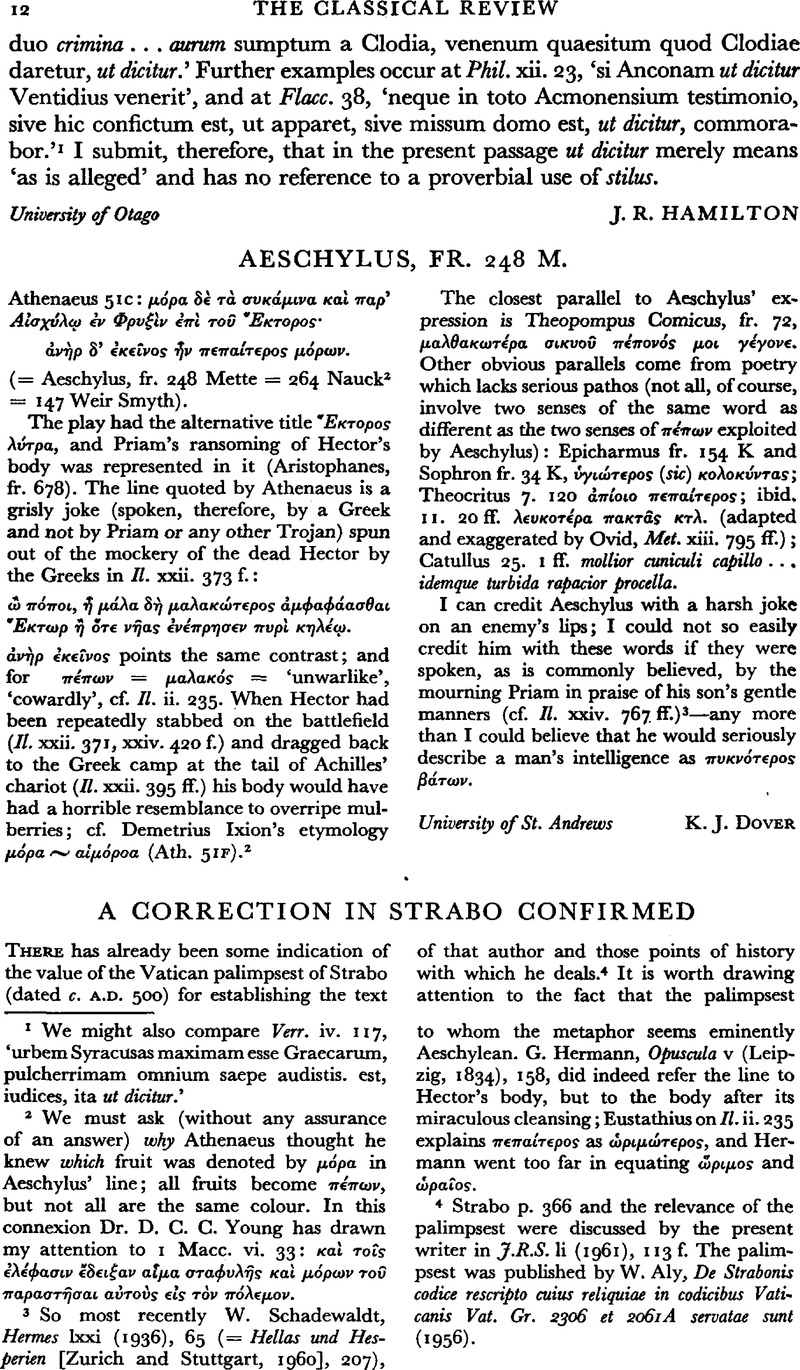No CrossRef data available.
Article contents
Aeschylus, Fr. 248 M
Published online by Cambridge University Press: 27 February 2009
Abstract

- Type
- Review Article
- Information
- Copyright
- Copyright © The Classical Association 1964
References
2 We must ask (without any assurance of an answer) why Athenaeus thought he knew which fruit was denoted by μ⋯ρα in Aeschylus' line; all fruits become π⋯πων but not all are the same colour. In this connexion Dr. D. C. C. Young has drawn my attention to 1 Macc. vi. 33: κα⋯ τοῖς ⋯λ⋯φασιν ἔδειξαν αἷμα σταφυλ⋯ς κα⋯ μ⋯ρων το⋯ παραστ⋯σαι αὐτοὺς εἰς τ⋯ν π⋯λεμον.
3 So most recently W. Schadewaldt, Hermes Ixxi (1936), 65 (= Hellas und Hesperien [Zurich and Stuttgart, 1960], 207), to whom the metaphor seems eminently Aeschylean. G. Hermann, Opuscula v (Leipzig, 1834), 158, did indeed refer the line to Hector's body, but to the body after its miraculous cleansing; Eustathius on II. ii. 235 explains πεπα⋯τερος? as ὡριμὠτερς, and Hermann went too far in equating ⋯ριμος and ὡραῖος.




